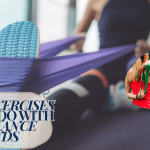Selecting the right sport is more than just about fun and competition—it’s about aligning your fitness goals with the physical and mental benefits that specific activities offer. Whether aiming to lose weight, build muscle, improve cardiovascular health, or simply enjoy an active lifestyle, the right sport can enhance motivation and boost overall well-being. With so many options available, it can be overwhelming to figure out which one fits best. Your goals matter—let’s find a sport that matches your energy and helps you reach them.
Fitness Picks: Find Your Sport Match in 12 Easy Steps
1. Define Your Fitness Goals
Before diving into the world of sports, it’s important to define your specific fitness goals. Do you want to lose weight, gain strength, build endurance, or focus on mental wellness? Different sports target different aspects of fitness, so identifying your primary objective will help narrow down the choices.
- Weight Loss: Sports that elevate heart rate and burn significant calories, like running, cycling, or swimming, can be effective for weight loss. High-intensity sports like boxing or HIIT (High-Intensity Interval Training) also help torch fat by keeping the body in a fat-burning zone.
- Muscle Building: If strength and muscle gain are your priorities, strength-based activities like weightlifting, rock climbing, or rowing are ideal. These sports involve resistance training, which is crucial for building lean muscle mass.
- Cardiovascular Health: For improving cardiovascular health, endurance sports like running, cycling, swimming, and rowing offer great benefits. These activities improve heart health by promoting aerobic fitness and increasing stamina.
- Mental Wellness: Sports like yoga, Pilates, or even recreational hiking promote both physical fitness and mental well-being, helping reduce stress, improve flexibility, and foster mindfulness.
2. Consider the Type of Activity You Enjoy
Find a sport you genuinely enjoy, and motivation will follow naturally. Start by thinking about the kinds of activities that energize you or leave you feeling accomplished. Does competition drive you, or do you prefer a more relaxed pace? Do team sports light you up, or are solo activities more your style? And what about the setting—do you thrive outdoors, or do you feel more at home in a gym or studio?
- Find a sport you love, and staying motivated becomes second nature. If you thrive in social settings and like the camaraderie of team sports, consider sports like soccer, basketball, or volleyball. On the other hand, if you prefer solitude or have a more introspective side, individual sports like running, swimming, or tennis may be a better fit.
- Indoor vs. Outdoor: Some individuals prefer the open air and nature, making outdoor activities like hiking, mountain biking, or trail running a perfect match. If you prefer a controlled environment, indoor activities such as gym workouts, indoor cycling, or swimming in a pool can be great options.
3. Assess Your Physical Limitations and Strengths
Every sport has different physical demands. It’s important to take your current fitness level, flexibility, injury history, and body type into consideration when choosing a sport. If you have joint issues, activities like swimming or cycling, which are lower-impact, might be better suited for you. Conversely, if you have good flexibility and want to focus on strengthening muscles, Pilates or yoga might be a great choice.
- Injuries: If you’ve experienced past injuries or have chronic conditions, selecting a sport that’s easier on the joints, like swimming, cycling, or walking, could help prevent exacerbating injuries.
- Fitness Level: Consider starting with a sport that aligns with your current fitness level. If you’re new to fitness, starting with low-impact activities like walking, yoga, or light cycling will build your foundation before progressing to more demanding sports.
4. Consider Time and Budget Constraints
Some sports require a greater time commitment, while others can be practised at home or in your local community. Choose a sport that fits with your schedule and budget. For example, sports like running or home workouts only require minimal equipment and time commitment, making them ideal for those with busy lives or tight budgets.
However, team-based sports or sports that require special equipment, such as tennis or golf, might involve higher upfront costs, both in terms of equipment and membership fees. Consider these factors when deciding.
5. Variety and Cross-Training
Sometimes, the best approach isn’t just sticking with one sport but diversifying your fitness routine. Incorporating variety into your workout regimen can prevent plateaus and keep things interesting. For example, mixing running with swimming or cycling can help you achieve full-body conditioning while avoiding boredom.
Cross-training also reduces the risk of overuse injuries by allowing different muscles to work in various ways. For those who are really serious about fitness, a combination of activities like yoga for flexibility, weightlifting for strength, and running for endurance is a winning combination.
6. Find the Right Balance Between Challenge and Enjoyment
The right sport should challenge you while also being something you genuinely enjoy. The goal is to push your limits and build your fitness level, but it should also feel rewarding rather than overwhelming. If a sport feels too difficult or doesn’t suit your preferences, you’re less likely to stick with it.
For example, running may be fantastic for cardiovascular health, but if it feels like a chore, you may not enjoy it long-term. Alternatively, joining a soccer team could provide both physical fitness and fun social interaction, keeping you engaged while also meeting your fitness goals.
7. Explore New Sports
Push your boundaries—you might be surprised at what you’re capable of.
Trying new sports or fitness activities can be exciting and help you discover what truly suits your fitness needs. For example, pushing a rock climbing class or joining a boxing gym may open up new possibilities that you hadn’t considered before.
If you’re unsure about what sport is right for you, give a few different ones a try before committing to one. Many fitness centres offer trial classes, so take advantage of those opportunities to test the waters and see what resonates.
8. Listen to Your Body
One of the most important aspects of choosing a sport is knowing how to listen to your body. It’s easy to get caught up in the excitement of trying something new, but it’s essential to gauge how your body reacts to different activities. Does your body feel energized and capable after your position, or does it feel fatigued and strained? Are you recovering well, or are you dealing with soreness that lingers longer than expected?
Choosing a sport that aligns with your body’s current state and limits will help avoid injuries and ensure long-term sustainability. Pay attention to any aches, pains, or signs of overexertion, as they could be signals that it’s time to adjust your intensity or try a different type of activity.
9. Social Support and Community
The social aspect of sports can be a key motivator. Whether it’s a supportive group of friends or a team of like-minded athletes, the community around a sport can help you stay consistent. Many people find it easier to stick with activity when they are part of a community that encourages, challenges and celebrates progress together.
If social interaction plays a big role in your motivation, consider joining group activities or team sports such as running clubs, tennis leagues, or even recreational soccer. Additionally, fitness apps or online platforms provide virtual communities where people can connect, share progress, and inspire one another to achieve fitness goals.
10. Long-Term Sustainability
It’s also essential to choose a sport that is sustainable in the long term. As much as you may enjoy a particular activity initially, it’s important to consider if you can maintain it consistently over time. Some sports might be physically demanding to the point where they’re hard to continue long-term, while others may evolve into a lifelong hobby or routine.
For example, while high-impact sports like marathon running or competitive cycling may offer excellent fitness results in the short term, they can be challenging to sustain over years due to joint strain and injury risks. Conversely, low-impact sports like swimming, cycling, or walking provide excellent longevity and allow people of all ages to engage in fitness for many years.
11. Fun Factor
Ultimately, a sport should be enjoyable. The best way to stay consistent in fitness is to engage in an activity that brings you joy. If you’re not having fun, you may not be motivated to continue, and consistency is key to achieving lasting fitness goals. Whether it’s the rush of hitting a ball in tennis, the satisfaction of hitting a personal best in swimming, or the sense of peace after a yoga session, fun should be an integral part of your chosen sport.
If you’re finding it hard to decide, explore different sports and activities that pique your curiosity. You might find that what you thought would be your favourite turns out to be something else entirely. Don’t be afraid to experiment and have fun with the process of discovering what fits you best.
12. Take Advantage of Technology
In today’s digital age, technology plays a huge role in helping individuals choose the right sport and track progress. Fitness tracking devices, apps, and wearables like smartwatches or fitness trackers can help monitor heart rate, calories burned, step count, and overall fitness progress. Many fitness apps also offer a variety of workout plans tailored to specific goals, whether it’s weight loss, muscle building, or endurance training.
Using these tools can help tailor your sports routine to your specific needs and give you real-time feedback on your performance. Additionally, virtual fitness platforms allow you to explore new sports or activities from the comfort of your home, offering classes ranging from yoga and pilates to martial arts or cycling.
Finding Your Fit: The Sport That Moves You
Finding the right sport means thinking about your goals, what you enjoy, your current fitness level, and how it fits into your lifestyle. Whether you’re aiming to lose weight, gain strength, improve cardiovascular health, or enjoy a more balanced lifestyle, the right sport will keep you motivated, challenged, and engaged for the long haul. It’s important to assess all aspects—from physical limitations and enjoyment to time commitments and social support—before diving in.
Remember, sports are not only about improving physical fitness but also about fostering a sense of accomplishment, personal growth, and overall well-being. Stay open-minded, be willing to explore new activities, and above all, have fun with the journey. The perfect sport is out there—it’s simply a matter of discovering which one fits your life and fitness goals best.



